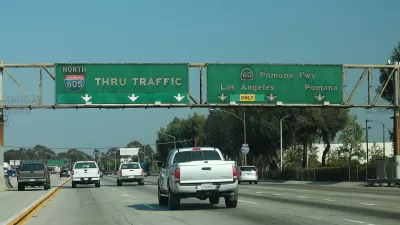In cities like Boston, the government’s right to take private property displaced residents and destroyed vulnerable neighborhoods and communities.
In a segment for the urban planning YouTube channel City Beautiful, Dave Amos looks at the history of eminent domain and how it has decimated neighborhoods in cities across the United States.
Government acquisition of private property for public use is not always a clear-cut process, and the idea of public use should really be understood as the public benefits such actions provide, says Amos. And the justifications for use of eminent domain are sometimes questionable, he argues.
"City leaders would often claim an area was blighted and use it as a rationale for abusing eminent domain and transferring properties from poor property owners to developers. And they would often build projects for the wealthy—things like condos, performing arts centers, and shopping centers," notes Amos.
He also takes issue with the very idea of blight and planners’ assertion that these areas needed to be destroyed and replaced with something better. One example of the urban renewal wave sweeping across the nation was what happened in Boston’s West End neighborhood. It was demolished in the 1950s, displacing over 10,000 residents, many of whom ended up in substandard housing.
The motivation for razing the West End was not improving neighborhoods, says Amos. Instead, developers saw the area as ideal for redevelopment of central Boston. "Poor and minority neighborhoods were seen as a disease that needed to be exterminated so that wealthy residents, shoppers, and businesspeople could return to the central city," adds Amos.
FULL STORY: Midweek Video: How Eminent Domain Destroys Neighborhoods

Trump Administration Could Effectively End Housing Voucher Program
Federal officials are eyeing major cuts to the Section 8 program that helps millions of low-income households pay rent.

Planetizen Federal Action Tracker
A weekly monitor of how Trump’s orders and actions are impacting planners and planning in America.

Ken Jennings Launches Transit Web Series
The Jeopardy champ wants you to ride public transit.

California Invests Additional $5M in Electric School Buses
The state wants to electrify all of its school bus fleets by 2035.

Austin Launches $2M Homelessness Prevention Fund
A new grant program from the city’s Homeless Strategy Office will fund rental assistance and supportive services.

Alabama School Forestry Initiative Brings Trees to Schoolyards
Trees can improve physical and mental health for students and commnity members.
Urban Design for Planners 1: Software Tools
This six-course series explores essential urban design concepts using open source software and equips planners with the tools they need to participate fully in the urban design process.
Planning for Universal Design
Learn the tools for implementing Universal Design in planning regulations.
Ada County Highway District
Clanton & Associates, Inc.
Jessamine County Fiscal Court
Institute for Housing and Urban Development Studies (IHS)
City of Grandview
Harvard GSD Executive Education
Toledo-Lucas County Plan Commissions
Salt Lake City
NYU Wagner Graduate School of Public Service





























